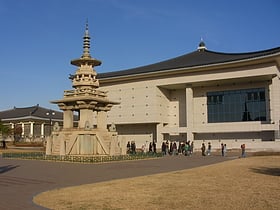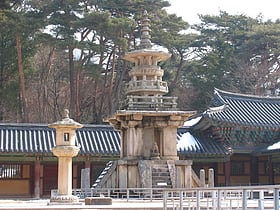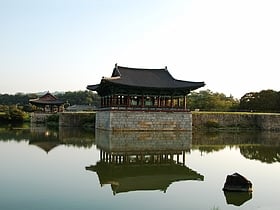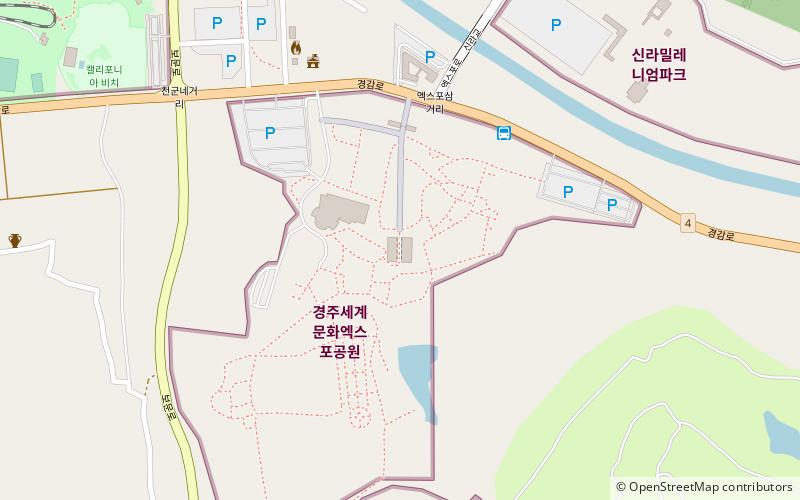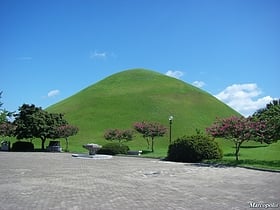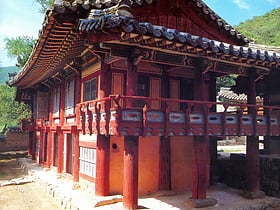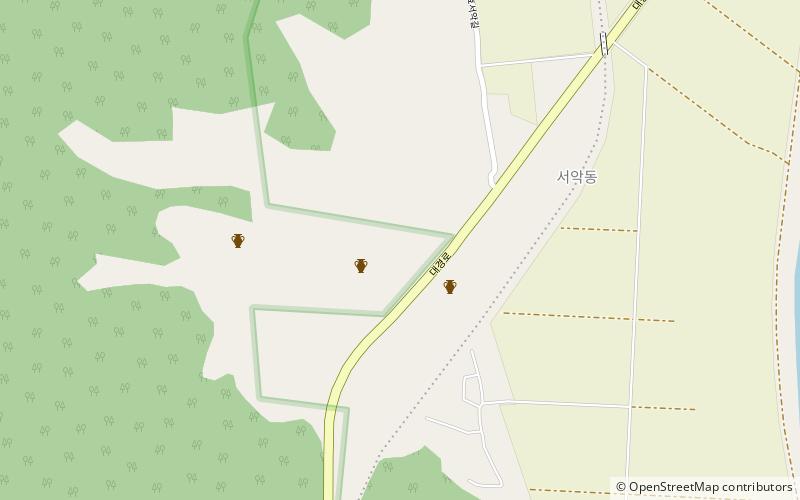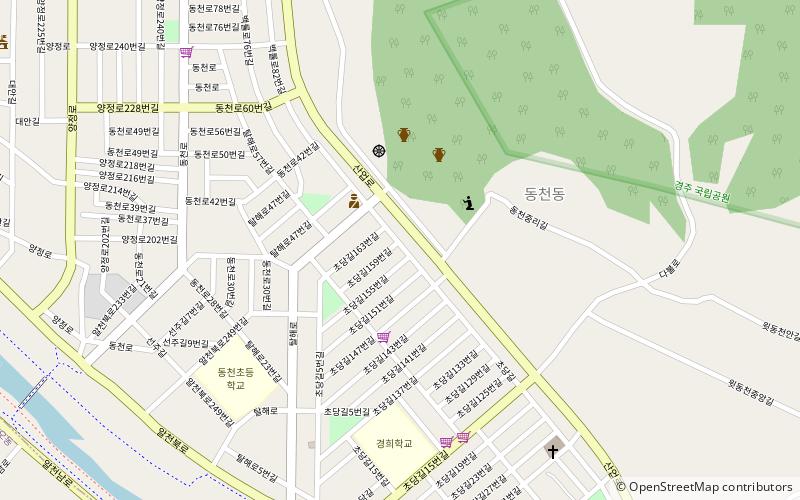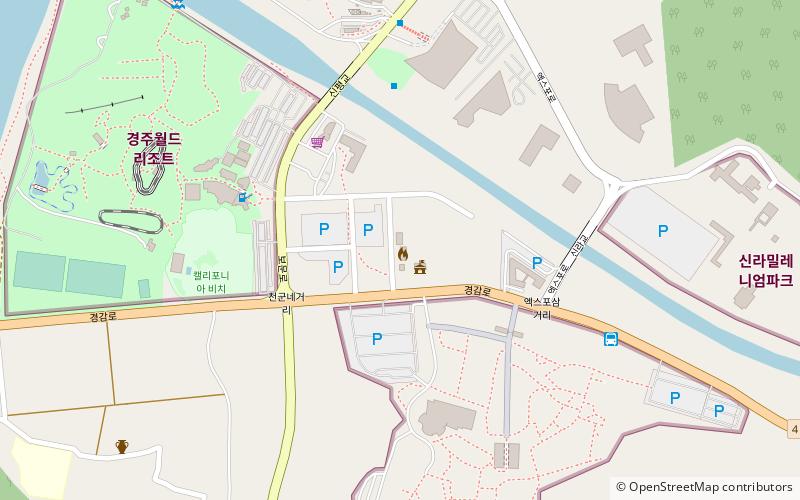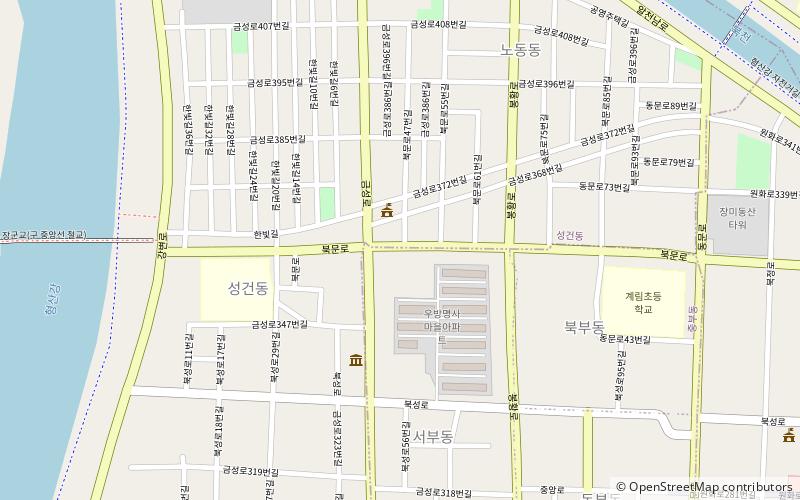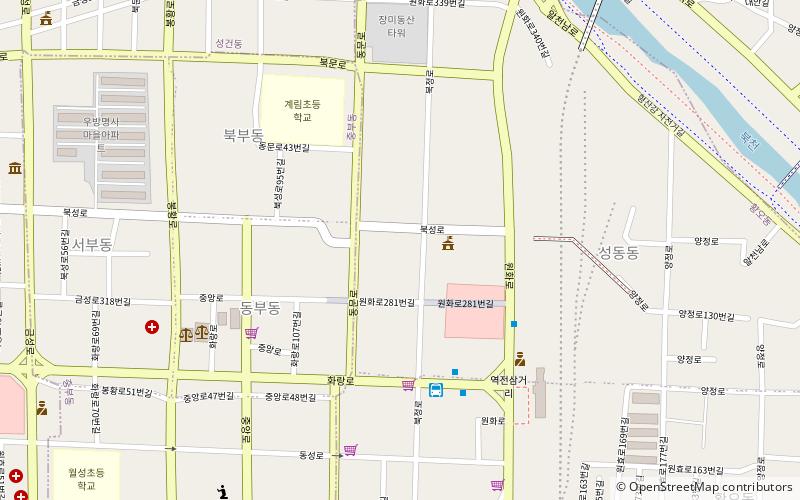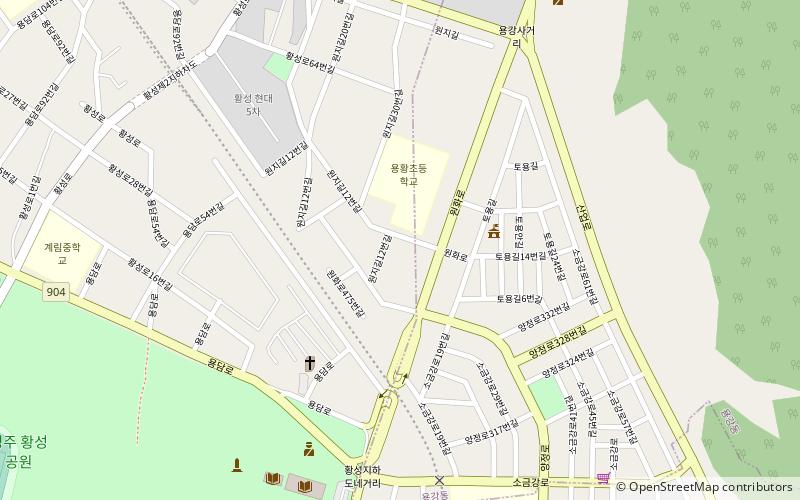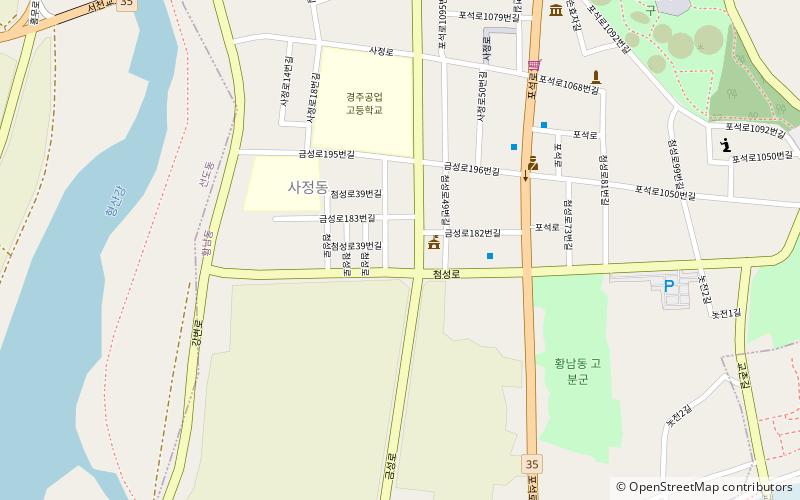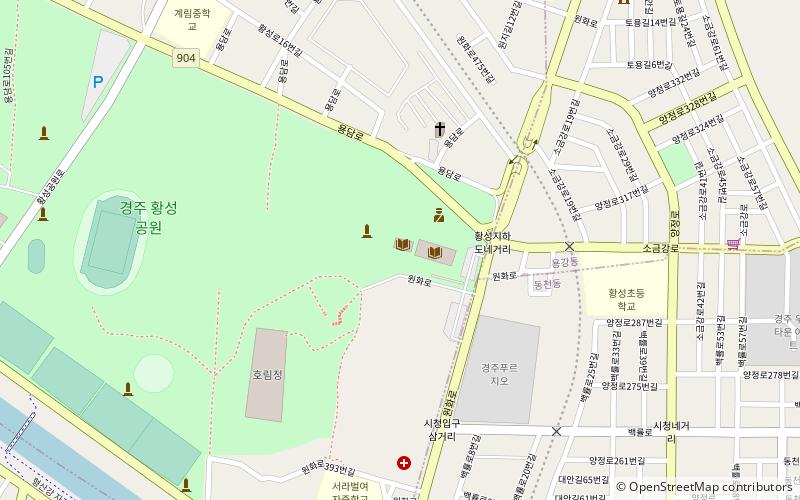Gyeongju: Sightseeing
Places and attractions in the Sightseeing category
Categories
More categoriesGyeongju National Museum
Exhibits on Gyeongju's royal heritage Gyeongju National Museum, nestled in the heart of the ancient city of Gyeongju, South Korea, stands as a custodian of the region's rich history. The museum, dedicated to preserving and showcasing the cultural heritage of the Silla Kingdom, which thrived from the 7th...
Dabotap
Dabotap, also known as the Pagoda of Many Treasures, is an iconic structure located in the heart of the historical city of Gyeongju, South Korea. This distinctive pagoda, believed to have been constructed in 774 during the Unified Silla period, is part of the temple...
Anapji Pond
Picturesque 7th-century pond and palace Anapji Pond, an exquisite archaeological site located in the historic city of Gyeongju, South Korea, is a vestige of the Silla Dynasty's opulence and architectural ingenuity. Constructed in 674 CE under the auspices of King Munmu, this artificial pond was part of the...
Seokgatap
Seokgatap, a three-story stone pagoda, stands as an emblem of the ancient city of Gyeongju, South Korea. This historic pagoda, located within the Bulguksa Temple complex, is a testament to the skill and artistry of Silla masons of the 8th century.
Bunhwangsa
Bunhwangsa Temple is a historic gem nestled in the ancient city of Gyeongju, South Korea. This temple, which dates back to the 7th century during the Silla Kingdom, is renowned for its distinctive pagoda, a testament to the architectural ingenuity of the era.
Girimsa
Nestled in the lush, serene valleys of Mount Hamwolsan in Gyeongju, South Korea, Girimsa Temple remains one of the lesser-known jewels of Korean Buddhism. Despite its relative obscurity compared to the nearby Bulguksa Temple, Girimsa offers a tranquil retreat and a...
Seongdong Market
Nestled in the heart of Gyeongju, a city rich with historical significance, sits Seongdong Market, a bustling hub of commerce that offers visitors an authentic slice of Korean market culture. Known for its vibrant atmosphere and a diverse array of goods, this...
Cheomseongdae
Observatory ruins dating from 632 A.D. Cheomseongdae Observatory is a testament to the advanced astronomical knowledge and architectural prowess of the Silla Dynasty, located in the historic city of Gyeongju, South Korea. Constructed in the 7th century, Cheomseongdae stands as the oldest surviving...
Banwolseong
Remnants of an ancient palace and fortress Banwolseong, also known as the Half Moon Fortress, is an ancient historical site nestled in the heart of Gyeongju, South Korea. This archaeological treasure was once the royal palace compound of the Silla Dynasty, which reigned from 57 BC to 935 AD.
Baengnyulsa
The Baengnyulsa or Baengnyul temple is a Korean Buddhist temple located on the slopes of Geumgang Mountain in the neighborhood of Dongcheon-dong, Gyeongju, North Gyeongsang province, South Korea.
Poseokjeong
The Poseokjeong site near Namsan in Gyeongju, Gyeongsangbuk-do South Korea, was built in the Unified Silla period. The site once featured a royal pavilion — said to have been the most beautiful royal villa of the time — but the only remains today is a granite water feature.
Hwangnyongsa
Hwangnyongsa, or Hwangnyong Temple was a Buddhist temple in the city of Gyeongju, South Korea. Completed in the 7th century, the enormous 9-story structure was built entirely with wood with interlocking design with no iron nails.
Golgulsa
Golgulsa is located 20 km east of the ancient Silla Dynasty capital city of Gyeongju in Southeastern Korea. In the Golgulsa temple area can be found the oldest historical Buddhist ruins on Mt. Hamwol and the only cave temple in Korea.
Hwangseong Park
The Hwangseong Park is a park located in the neighborhood of Hwangseong-dong, Gyeongju, North Gyeongsang province, South Korea. Many of public sport facilities are located in the park with an area of 1,022,350㎡ including a luxuriant pine trees forest.
Gyeongju Tower
Gyeongju Tower is an observation tower located in the Gyeongju Expo Park, Gyeongju city, North Gyeongsang province, South Korea. It was completed on 14, August 2007 along with Gyeongju Expo Culture Center. The tower is with a height of 82 meters as comparable to that of a 30 storied apartment.
Silla Arts and Science Museum
Silla Arts and Science Museum is a private history and science museum located in the district of Gyeongju Folk Craft Village, Ha-dong, Gyeongju, North Gyeongsang, South Korea. It was established on 15, October, 1988 by Seok U-il to provide an opportunity that children and youths visiting Gyeongju could know the root of Korean science.
Gyeongju Historic Areas
The Gyeongju Historic Areas of South Korea were designated as a World Heritage Site by UNESCO in 2000. The protected areas encompass the ruins of temples and palaces, outdoor pagodas and statuary, and other cultural artifacts left by the Silla Kingdom.
Gyeongju Seokbinggo
The Gyeongju Seokbinggo is a seokbinggo or ice house located in the neighborhood of Inwang-dong, Gyeongju, North Gyeongsang province, South Korea. It literally means "stone ice storage" in Korean.
Gyerim
Tranquil wooded area near historic sites The Gyerim is a small woodland in Gyeongju National Park, Gyeongju, South Korea. The name literally means "rooster forest." The grove lies near the old site of the Silla kingdom palace in central Gyeongju.
Gold Crown Tomb
The Gold Crown Tomb, is a Silla tumulus located in modern-day Gyeongju, South Korea, the former capital of the ancient Silla Kingdom. Believed to date from the fifth or sixth century CE, the tomb was excavated in 1921.
Borisa Sitting Buddha
The Borisa Sitting Buddha is located at the east slope of Namsan Mountain in Gyeongju, Korea. This site is supposed to be the place where Borisa temple had stood during the Silla period.
Cheonmachong
Ancient tomb from the 5th or 6th century Cheonmachong, formerly Tomb No.155 in South Korea, is a tumulus located in Gyeongju, South Korea. The name "Cheonmachong" means Sky horse tomb. This tomb was built in the style of Silla.
Bomun Lake Resort
The Bomun Lake Resort is a large tourist complex around Bomun Lake in the city of Gyeongju, South Korea. The resort covers the districts of Bomun-dong, Sinpyeong-dong, Amgok-dong and Cheongun-dong.
Bell of King Seongdeok
The Bell of King Seongdeok is a large bronze bell, the largest extant bell in Korea. The full Korean name means "Sacred Bell of King Seongdeok the Great." It was also known as the Emille Bell, after a legend about its casting, and as the Bell of Bongdeoksa Temple, where it was first housed.
Oksan Seowon
The Oksan Seowon is a seowon located at Oksan-ri, Angang-eup in the city of Gyeongju, North Gyeongsang Province, South Korea. Seowon is a type of local academy during the Joseon Dynasty.
Gyeongju Hyanggyo
The Gyeongju Hyanggyo is a hyanggyo or government-run provincial school during the Goryeo and Joseon periods, which is located the neighborhood of Gyo-dong, Gyeongju, North Gyeongsang province, South Korea.
Seoak Seowon
The Seoak Seowon is a seowon located in the neighborhood of Seoak-dong, Gyeongju, North Gyeongsang Province, South Korea. Seowon was a type of local academy during the Joseon Dynasty.
Historic Sites of South Korea
Official Historic Sites of South Korea are designated by the Cultural Heritage Administration of Korea, part of the South Korean government.
Angang Sewage Disposal Plant
The Angang Sewage Disposal Plant is a sewage treatment plant located in the city of Gyeongju, North Gyeongsang province, South Korea.
Seondo-dong
Seondo-dong is an administrative dong or neighbourhood in the administrative subdivisions of the Gyeongju City, North Gyeongsang province, South Korea. It consists of four legal dongs such as Seoak-dong, Chunghyo-dong, Hyohyeon-dong, and Gwangmyeong-dong.
Mangsan
Mangsan is a mountain of Gyeongsangnam-do, southeastern South Korea. It has an elevation of 406 metres.
Dongcheon-dong
Dongcheon-dong is both an administrative and legal dong or a neighbourhood of the Gyeongju City, North Gyeongsang province, South Korea.
Bodeok-dong
Bodeok-dong is an administrative dong or a neighbourhood in the administrative subdivisions of the Gyeongju City, North Gyeongsang province, South Korea.
Seonggeon-dong
Seonggeon-dong is an administrative dong or a neighbourhood in the administrative subdivisions of the Gyeongju City, North Gyeongsang province, South Korea. It consists of four legal dongs including Seonggeon-dong and Seokjang-dong.
Hwango-dong
Hwango-dong is a dong or a neighbourhood of the Gyeongju City, North Gyeongsang province, South Korea. It is located in the central Gyeongju and is bordered by Bohwang-dong on the east, Jangang-dong on the west, Hwangnam-dong on the south and Seongdong-dong on the north.
Yonggang-dong
Yonggang-dong is both an administrative and legal dong or a neighbourhood in the administrative subdivisions of the Gyeongju City, North Gyeongsang province, South Korea.
Hwangnam-dong
Hwangnam-dong is a dong or a neighbourhood of the Gyeongju City, North Gyeongsang province, South Korea. It is bordered by Dodong-dong on the east, Tapjeong-dong on the west, Naenam-myeon on the south and Jungang-dong on the north.
Hwangseong-dong
Hwangseong-dong is both an administrative and legal dong or a neighbourhood in the administrative subdivisions of the Gyeongju City, North Gyeongsang province, South Korea.
Map

